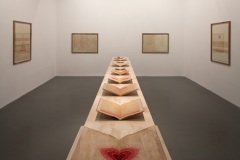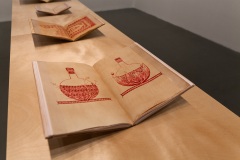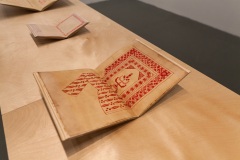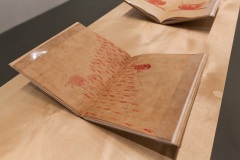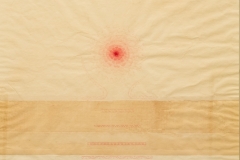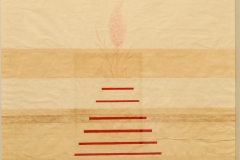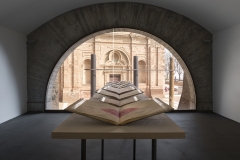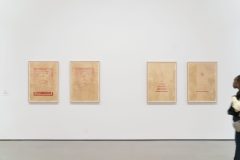Red / Red narrates the story of and through one color—red. The red used in the project is a specific pigment traditionally made from an insect known as “Ararat” or “Armenian Cochineal” [Porphyrophora Hamelii], indigenous to the Ararat Plain. Red / Red proposes a model of co-existence for inhabitants of this contested geographic region through an ecosystem that fosters the production of this special color.
Armenian cochineal is an insect that lives in the roots of the Aeluropus littoralis plant that grows on the banks of the Aras River, which marks the natural border between Turkey and Armenia. The carminic acid found in the Armenian cochineal enables the production of a special red that has been known back to the 7th century BC. This red was used in textiles, frescos and manuscripts and produced mostly by Armenians.
Aeluropus littoralis and Armenian cochineal have been categorized as endangered species since the industrialization in 1970s’ USSR Armenia. On the Turkish side, there is no threat to the growing areas of the plant and the insect, but the knowledge of producing the red color is lacking since 1915.
Armen Sahakyan, PH.D., a phytotherapist and senior researcher at the Mesrop Mashtots Institute of Ancient Manuscripts in Yerevan is probably the only person who can still extract this red based on the recipes from the 14th century Armenian manuscripts. The drawings have been created with the 12 gr of Armenian cochineal ink given to the artist by Sahakyan. In Red / Red the story of the evolution that the color went through on both sides unfold: Armenian cochineal red is being replaced by the red of the Turkish “flag” on the side of Turkey and on the Armenian side rapidly diminishing.
Armenian Cochineal ink and Turkish Red pigment on worn-out papers and worn-out handmade notebooks. Dimensions variable.
Produced for the 14th Istanbul Biennial with the support of Mathaf: Arab Museum of Modern Art and SAHA.
Asli Cavusoglu, one of the best participants in this year’s New Museum triennial in New York, impresses again here with delicate, beguiling paintings on paper. They depict flowers, insects and architectural details, which Ms. Cavusoglu has painted with a pink dye, extracted from Armenian cochineals, that has already begun to fade. Other parts of the drawings are done in a darker, more enduring ink: the red, surely, of the Turkish flag.
New York Times by Jason Farrago
*
In Cavuşoğlu’s paintings and sculptural books, this carmine pigment is juxtaposed with another, more enduring red, the brighter one of the Turkish flag and a common colour in Turkey. It’s interesting to note that she uses the fading red pigment, which seems doomed to vanish, to paint mainly flora and fauna, an action which reinforces her attempts to hold onto and document that which is subject to the recurring cycle of life and death, rise and fall.
